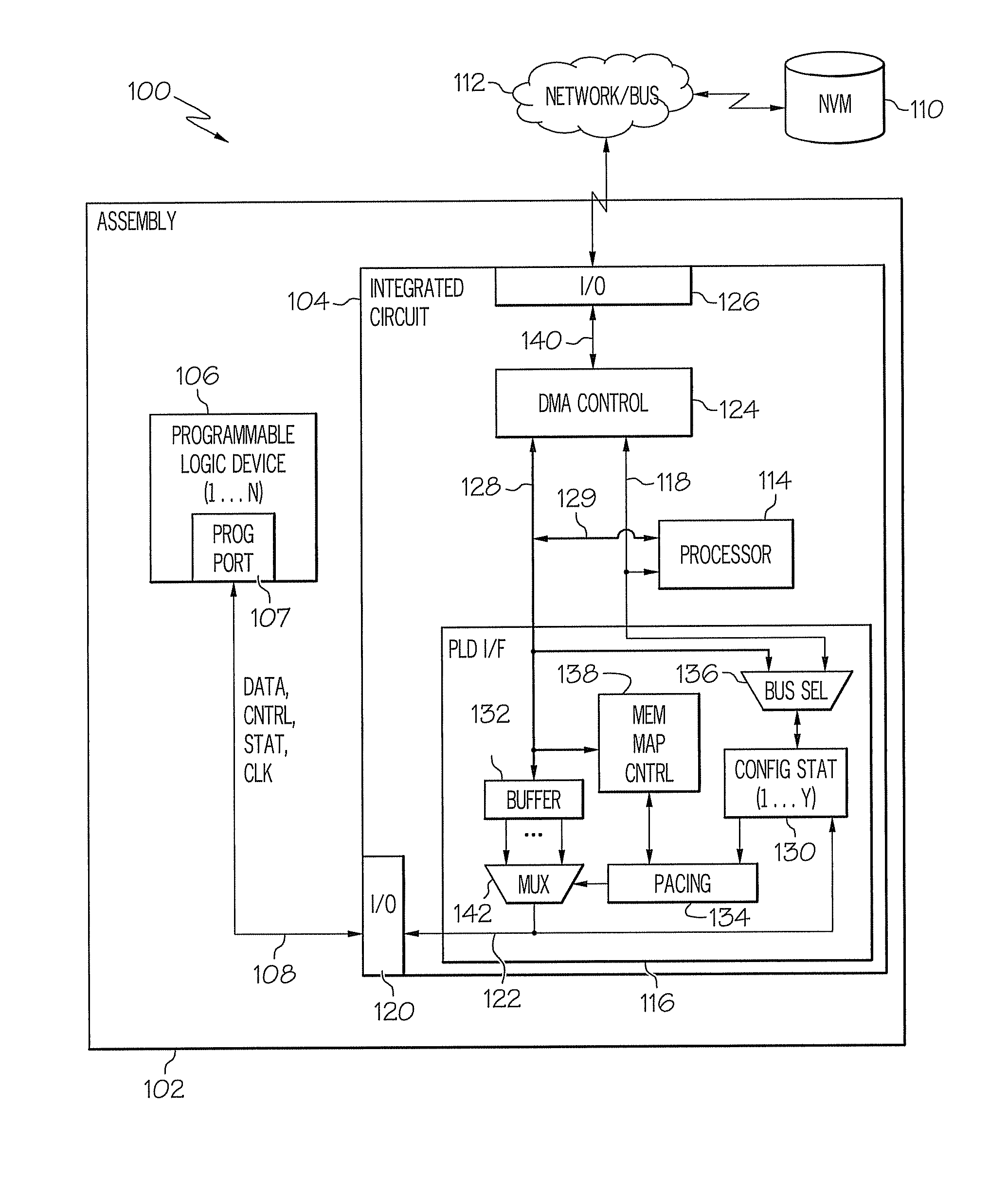Using direct memory access to initialize a programmable logic device
a programmable logic and direct memory technology, applied in the direction of logic circuits, pulse techniques, instruments, etc., can solve the problems of long system initialization time, soft errors, and need for reprogramming
- Summary
- Abstract
- Description
- Claims
- Application Information
AI Technical Summary
Benefits of technology
Problems solved by technology
Method used
Image
Examples
Embodiment Construction
[0020]An exemplary embodiment utilizes direct memory access (DMA) to initialize a programmable logic device (PLD). A DMA control within a system is used in conjunction with a small amount of additional logic to program (initialize / load) a field programmable PLD. Software executing upon a processor may initiate the PLD programming sequence through the DMA control and associated logic. The use of the DMA control and associated logic ensures that the processor is not tied up in providing active control during the PLD programming process. As a result, the processor can perform other system initialization operations in parallel (e.g., built-in tests, initialization of memory to a known state, etc.) while the PLD is programmed rather than executing initialization tasks sequentially. Parallel execution of system initialization may decrease system initialization time and increase responsiveness. Software executing upon the processor can control when the PLD programming process initiates, as...
PUM
 Login to View More
Login to View More Abstract
Description
Claims
Application Information
 Login to View More
Login to View More - R&D
- Intellectual Property
- Life Sciences
- Materials
- Tech Scout
- Unparalleled Data Quality
- Higher Quality Content
- 60% Fewer Hallucinations
Browse by: Latest US Patents, China's latest patents, Technical Efficacy Thesaurus, Application Domain, Technology Topic, Popular Technical Reports.
© 2025 PatSnap. All rights reserved.Legal|Privacy policy|Modern Slavery Act Transparency Statement|Sitemap|About US| Contact US: help@patsnap.com



